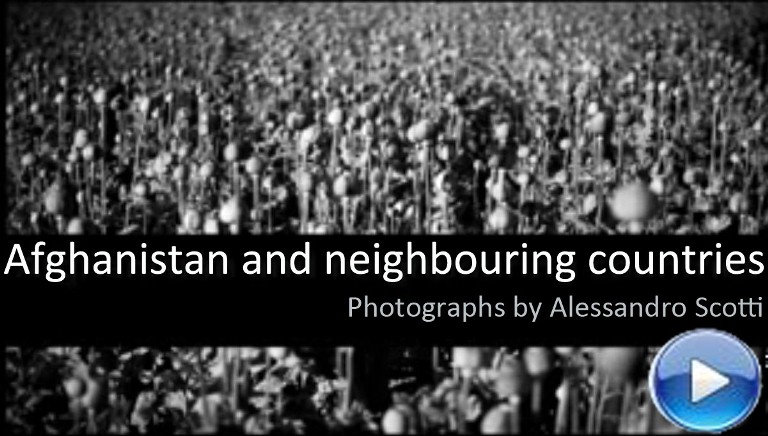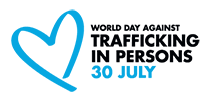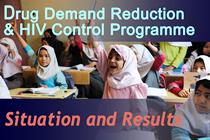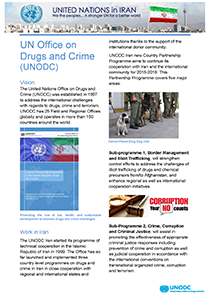Iran: Street Children learn survival strategies
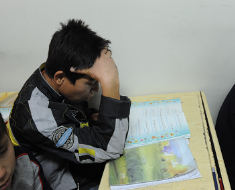 Every evening, Ali stands in front of restaurants in Farahzad area to sell
Fall (Fortune telling Poems) and socks to customers. Ali is an 8 year-old Afghani who has been forced to work by his father, a drug addict, since he was 6. Without Ali's earnings, his mother and two brothers would not be able to survive in the city. A few months ago, Ali's mother approached the Rouyesh Nahal Javan NGO requesting its assistance to provide basic education for her son. Ali has not been able to attend public schools because he does not have proper documents. However, he could start benefiting from the NGO's literacy and numeracy trainings. At the beginning, the NGO counsellors noticed that he was sleeping in the morning classes. This was due to the fact that he was working on the streets until late at night. The counsellors finally managed to convince Ali's parents not to let him stay out late in the streets and since then, Ali's learning has improved considerably.
Every evening, Ali stands in front of restaurants in Farahzad area to sell
Fall (Fortune telling Poems) and socks to customers. Ali is an 8 year-old Afghani who has been forced to work by his father, a drug addict, since he was 6. Without Ali's earnings, his mother and two brothers would not be able to survive in the city. A few months ago, Ali's mother approached the Rouyesh Nahal Javan NGO requesting its assistance to provide basic education for her son. Ali has not been able to attend public schools because he does not have proper documents. However, he could start benefiting from the NGO's literacy and numeracy trainings. At the beginning, the NGO counsellors noticed that he was sleeping in the morning classes. This was due to the fact that he was working on the streets until late at night. The counsellors finally managed to convince Ali's parents not to let him stay out late in the streets and since then, Ali's learning has improved considerably.
In Iran, children living on the streets can often be seen in urban centers such as Tehran, Isfahan, Mashad, and Shiraz. Many of them are the offspring of Afghan refugees. Others come from Iranian families who have slipped, through unemployment, drug addiction or illness, into the populous ranks of the urban poor.
Iran is signatory to the Convention on the Rights of the Child, but it has not ratified other international conventions defining the minimum age for child labour. Nonetheless, according to Iranian law, a child cannot legally work under the age of 15.
Street children are a particularly vulnerable section of many societies. The exact number of street children is impossible to quantify, but the figure almost certainly runs into tens of millions across the world [1]. These children live under especially difficult and hazardous circumstances that expose them to the risk of drug use and HIV. In addition, working children, children living on the streets and children without complete personal documents have reduced access to schools and are at high risk of abuse, including sexual abuse and exploitation by criminal groups. In Iran, Governmental and Non-Governmental Organizations (NGOs) working with Street children have been very active in addressing the problems of these children. Many of them provide shelter, medical treatment, and basic education. In addition, they teach the children "survival skills". "We teach them how to survive in the streets," said Ms. Ziayi Mehr, a social worker from the Rouyesh Nahal Javan. "Part of these survival skills might be communication skills. As a seller and buyer, they may be manipulated or abused by gang leaders. Some of these children are hired out for 8, 10 or 12 hours as professional beggars. We teach them how to deal with these horrible abusers." Other lessons include helping children fend off sexual abuse, staying warm during Tehran's snowy winters, and include simple technical skills to encourage safer means of earning money.
Since 2008, the United Nations Office for Drugs and Crimes (UNODC) has been working closely with the Iranian authorities to empower the NGOs working with Street Children. In the framework of its Technical Cooperation Programme on Drugs and Crime for the Islamic Republic of Iran (2011-2014) and thanks to the generous contribution of the Kingdom of Norway, UNODC organized in November 2011 a 4-day training workshop for service providers of NGOs. This workshop aimed at enhancing the capacity of service providers on life skill trainings for street children. In 2012, UNODC will be working on finalizing a life skill training package for drug prevention and HIV control among street children.
